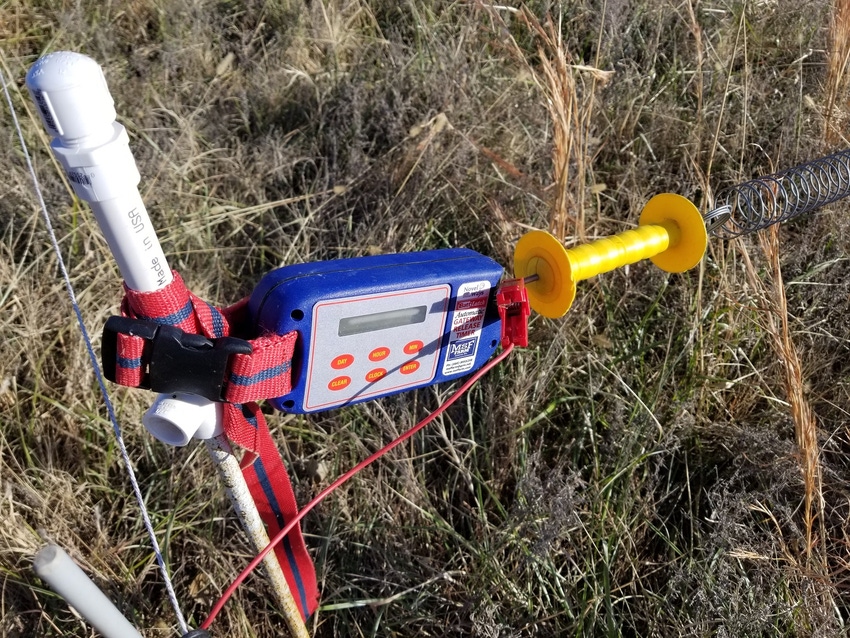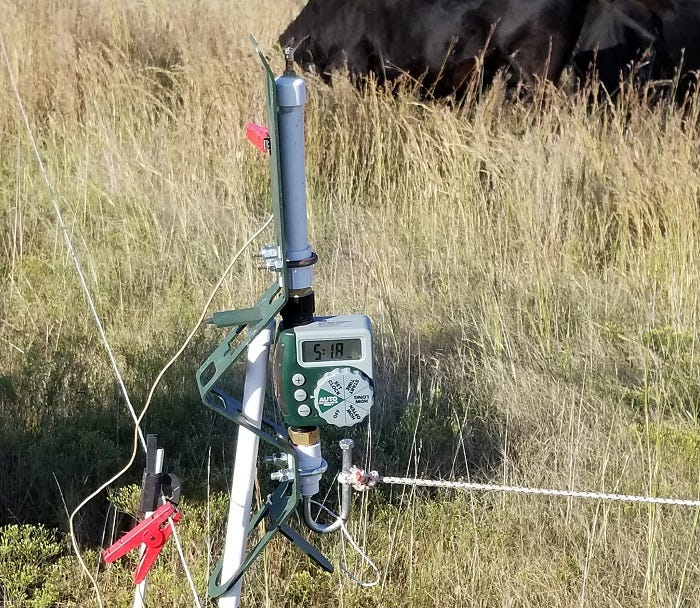
Back in the fall of 2018 I blogged the question about how to most cost-efficiently increase stock density using automatic gate openers or similar technology.
I could only find the Batt-Latch at the time and was weighing it against extra trips to the farm.
More specifically, I was looking at the Novel Ways Batt-Latch -- costing more than $400 -- as the only viable method to automatically open temporary electric fence “gates” to move cattle to a new paddock without me being there in person.
In this search for gate openers, I found two other options. One was a homemade opener using compressed air and designed by a southern-Texas grazing manager. The other is a device that lifts the polywire up by way of mounting on a telescoping pole, and is manufactured by PensAgro in Argentina. I tried the air-operated latches for several months. I have not yet tried the PensAgro wire lifter. I have been using a Batt-Latch for more than one year now.
First, the price comparison is this: Homemade gate opener - $100. PensAgro wire lifter - $315 US dollars, but shipping currently is very costly. The PensAgro unit will be available in the US soon, however. Batt-Latch - $450, plus shipping. PensAgro has a six-month warranty. Batt-Latch has a one-year warranty.
Homemade unit
The air-actuated latch was designed by John Coleman Locke in Hungerford, Texas. It uses an Orbit brand hose-end water timer at its core, with a small PVC-pipe air reservoir screwed to its top as the power source. Instead of opening to let water through, it opens to let compressed air through and that blows out a rubber-grommetted hook at the appointed time. The hook holds an electrified bungee cord gate, and blowing it out allows the gate to spring open.
My experience with the unit was it was normally reliable, but on occasion it did not release. Locke uses a small air pump on his units with great success, but I tried three different pumps and did not get reliable results that way. My best results were with a small air tank and about 50 pounds of air. Also I found it had lower reliability once the temperatures became really cold. Certainly the timer must be set correctly, and I messed that up a few times, but I also had a few failures that were obviously from inadequate air pressure. If I were at the farm and could check the cattle during the day I would continue using these timers in warm weather, but since I go to the farm only once each day I decided it is not “safe” for me to depend on them.

The Batt-Latch, on the other hand, has never failed to go off unless I incorrectly set the timer. Winter or summer, freezing cold or blazing hot sun, it has opened the gate for my cattle. Mike Fries from MSF Farm Supply in Linneus, Missouri, offered me a trial of the Batt-Latch. The Batt-Latch comes in a box with a spring gate and electric fence jumper clip.
One thing I really like is the Batt-Latch can be scheduled out to a week in advance. This is really useful for me when I need to travel and want to set one or more fences to open while I’m gone. It also keeps my wife happier when she doesn’t have to roll up as much electric fence.
It can be set to go off at any time daily. It will repeat these settings until the program is cancelled. Or it can be set on a specific day and time during the week upcoming.
My gate ends
For both these timers I have tried, I use relatively small, metal end-posts I can easily step into the ground. I weld these up in my shop, and even though I hate metal in an electric fence, these have been useful for me and if set up correctly I’ve rarely had any shorts from them.
One thing to be aware of is the Batt-Latch has an air vent inside a hole near the top and it must be kept open or condensation will build up inside. Fries told me it comes with a small screen insert to keep critters from building a nest inside it and blocking it off. My screen must have fallen out. If that happens to you, you can send it in for service, but I cleaned out my own and put a rolled-up piece of fiberglass window screen inside to protect the vent and make it the little hole easy to clean.
When the wire lifter from PensAgro comes more readily available in this country, I will test these and report on them, too.
About the Author(s)
You May Also Like




